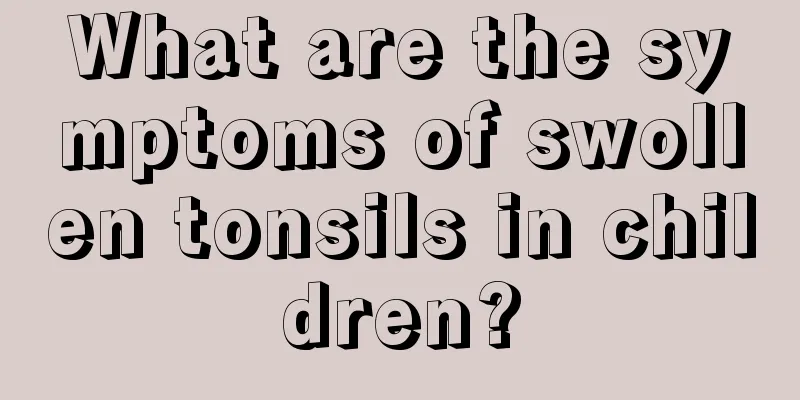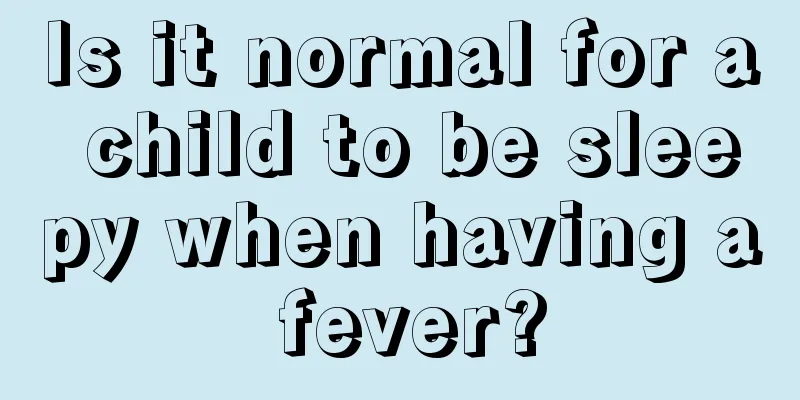How to treat intussusception in children?

|
Intussusception in children is a disease caused by intestinal obstruction in children, or abnormal lesions in the connected intestines. It usually occurs in infancy and can easily lead to intestinal obstruction. Intussusception in children is also divided into many types. The most common ones are acute intussusception or chronic intussusception. You need to go to the hospital for a detailed examination and timely treatment. How to treat intussusception in children?treat There are two types of treatment for acute intussusception in children: non-surgical and surgical. Non-surgical treatments include air enema, barium enema and water pressure enema reduction therapy under B-ultrasound, among which air enema reduction has been widely used for a long time. 1. Non-surgical treatment Air enema to reduce intussusception: Use a colon insufflation machine with automatic pressure control, insert a Foley tube into the anus, and after gas is injected into the anus, various images of the intussusception mass can be seen, which gradually retreats toward the ileocecal region until it disappears completely. At this time, a sound of air passing through water can be heard, and the center of the abdomen suddenly bulges, and a reticular or circular inflated ileum can be seen, indicating that the intussusception has been reduced. The reduction rate of air enema can reach over 95%. Complications of air enema reduction: Severe complications include colon perforation, and the abdominal "flash" phenomenon appears under fluoroscopy, that is, air suddenly appears and fills the entire abdominal cavity, and free gas is seen under the diaphragm in the standing position. When the anal tube is pulled out, no gas is discharged from the anus. The child had difficulty breathing, a rapid heartbeat, a pale face, and his condition suddenly worsened. A sterile needle should be used to pierce the area between the xiphoid process and the navel to expel the gas from the abdominal cavity.
Indications for surgical treatment are: (1) Patients whose intussusception has not been successfully reduced by non-surgical methods such as air pressure enema. (2) The onset of disease exceeds 24 to 48 hours and intestinal necrosis is clinically suspected. (3) Recurrent intussusception, especially in children. (4) Intussusception in adults. Dehydration and electrolyte imbalance should be corrected before surgery, and the patient should be deprived of food and water and undergo gastrointestinal decompression. If necessary, measures such as antipyretic, oxygen inhalation, and blood preparation should be adopted. Anesthesia is usually performed with general anesthesia and endotracheal intubation. For smaller infants, a transverse upper abdominal incision can be used. If enema shows that the intussusception has reached the ileocecal region, a McBurney incision can also be used. After laparotomy, the intussusception mass was exposed and checked for intestinal necrosis. If there is no intestinal necrosis, use the compression method to repair the intussusception along the colon frame. After reducing the intussusception, carefully check whether the intestine is necrotized, whether the intestinal wall is ruptured, and whether the intestine itself has organic lesions. If there are no such signs, remove the appendix, put the intestine into the abdominal cavity, and suture the abdominal wall in layers. For cases that cannot be reduced and intestinal necrosis, resection and anastomosis of the necrotic intestinal segment should be performed.
Pediatric intussusception is divided into infantile intussusception (under 1 year old) and childhood intussusception, and the former is more common in clinical practice. 1. Infants with multiple intussusception It is primary intussusception, and the clinical features are as follows: (1) Paroxysmal crying and fussing: It is common for previously healthy and obese infants to suddenly develop paroxysmal and regular crying and fussing that lasts for about 10 to 20 minutes, accompanied by restless movements of the hands and feet, pale complexion, refusal to eat, and abnormal expressions of pain, followed by temporary silence of 5 to 10 minutes or longer, which repeats itself. This kind of paroxysmal crying coincides with the intervals between intestinal peristalsis. As intestinal peristalsis pushes the intussuscepted intestinal segment forward, the mesentery is pulled, and the intussusception sheath undergoes strong contraction, causing severe pain. When the peristaltic wave passes, the child becomes quiet. In the late stage of intussusception combined with intestinal necrosis and peritonitis, the child becomes listless and has poor response. (2) Vomiting initially consists of milk, milk curds, or other food, which then turns into bile-like substances, and after 1 to 2 days, turns into foul-smelling intestinal contents, indicating a serious condition. (3) Abdominal mass Check the abdomen in the interval between two crying episodes. A sausage-like, slightly movable, and slightly tender mass may be felt under the liver in the right upper abdomen. There is usually a feeling of emptiness in the right lower abdomen. The mass may move along the colon. In severe cases, a cervix-like mass may be felt in the rectum during digital rectal examination, which is the head of the intussusception. (4) Jam-like bloody stool More than 80% of infants with intussusception have bloody stools, which is the first symptom for medical treatment. Most of them will have bloody stools 6 to 12 hours after the onset of the disease, and the earliest one may appear as early as 3 to 4 hours after the onset of the disease. The bloody stools are thin mucus or jelly-like jam-colored blood, which may be discharged again after several hours. (5) Digital rectal examination has important clinical value. Although some children who come to the clinic at an early age do not have bloody stools, digital rectal examination can reveal mucus and blood in the rectum, which is extremely valuable for diagnosing intussusception. |
<<: What should I do if my child has bad breath due to internal heat?
>>: What to do if your child has poor coordination
Recommend
What to do if your child has a cold cough
In winter, parents must pay attention to keeping ...
How to care for a baby who drools for more than two months
In the newborn period, babies generally do not dr...
Why do newborns sometimes have shortness of breath?
Every baby is a newborn angel, and parents will n...
What causes foam in children's urine?
Some children have problems with their urine, so ...
Can a four-month-old baby really use air conditioning?
In the hot summer, due to the high temperature, w...
What foods are good for children with bad tempers?
Children's bad temper is a headache for paren...
How to treat baby rhinitis?
The physical health of a baby is of great importa...
Hand, foot and mouth disease prevention knowledge
There are many common diseases in life. Different...
Duloxetine for the early manifestations of brain damage in babies with brain damage
The main effect of duloxetine is to treat brain i...
Is it harmful to pat a baby's bottom?
Many parents will spank their babies when playing...
2 and a half year old baby still can't speak
Some babies cannot speak until they are two and a...
Is shingles contagious to babies?
Herpes is a common disease among people. Anyone w...
What medicine should children take for abdominal pain
Children are prone to abdominal pain in their dai...
What should I do if my three-year-old baby has lymph nodes on his neck?
The neck has the most lymph nodes. When there is ...
What should I do if my baby doesn't have enough milk and doesn't want to eat milk powder?
We all know that many mothers now adopt the metho...









